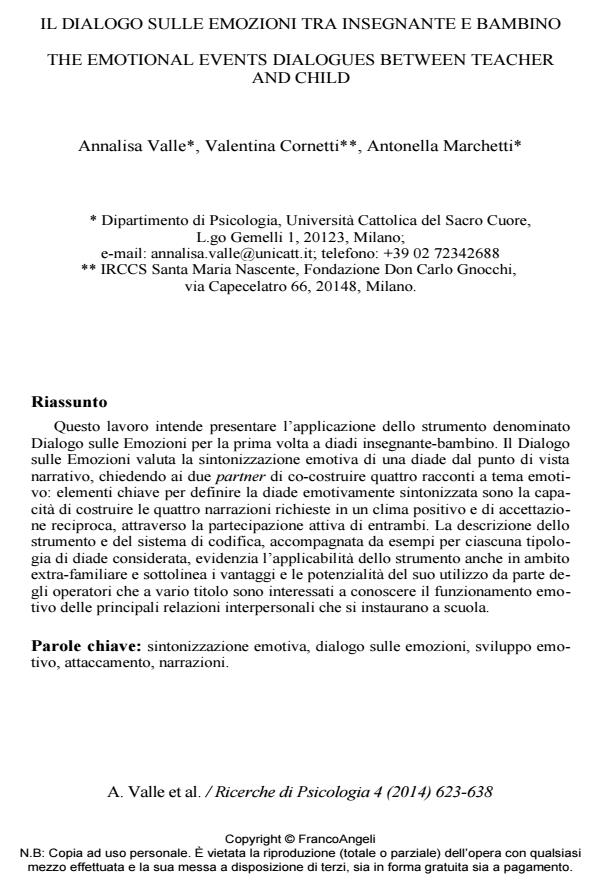Il dialogo sulle emozioni tra insegnante e bambino
Titolo Rivista RICERCHE DI PSICOLOGIA
Autori/Curatori Annalisa Valle, Valentina Cornetti, Antonella Marchetti
Anno di pubblicazione 2015 Fascicolo 2014/4
Lingua Italiano Numero pagine 16 P. 623-638 Dimensione file 199 KB
DOI 10.3280/RIP2014-004006
Il DOI è il codice a barre della proprietà intellettuale: per saperne di più
clicca qui
Qui sotto puoi vedere in anteprima la prima pagina di questo articolo.
Se questo articolo ti interessa, lo puoi acquistare (e scaricare in formato pdf) seguendo le facili indicazioni per acquistare il download credit. Acquista Download Credits per scaricare questo Articolo in formato PDF

FrancoAngeli è membro della Publishers International Linking Association, Inc (PILA)associazione indipendente e non profit per facilitare (attraverso i servizi tecnologici implementati da CrossRef.org) l’accesso degli studiosi ai contenuti digitali nelle pubblicazioni professionali e scientifiche
Questo lavoro intende presentare l’applicazione dello strumento denominato Dialogo sulle Emozioni per la prima volta a diadi insegnante-bambino. Il Dialogo sulle Emozioni valuta la sintonizzazione emotiva di una diade dal punto di vista narrativo, chiedendo ai due partner di co-costruire quattro racconti a tema emotivo: elementi chiave per definire la diade emotivamente sintonizzata sono la capacità di costruire le quattro narrazioni richieste in un clima positivo e di accettazione reciproca, attraverso la partecipazione attiva di entrambi. La descrizione dello strumento e del sistema di codifica, accompagnata da esempi per ciascuna tipologia di diade considerata, evidenzia l’applicabilità dello strumento anche in ambito extra-familiare e sottolinea i vantaggi e le potenzialità del suo utilizzo da parte degli operatori che a vario titolo sono interessati a conoscere il funzionamento emotivo delle principali relazioni interpersonali che si instaurano a scuola.
Parole chiave:Sintonizzazione emotiva, dialogo sulle emozioni, sviluppo emotivo, attaccamento, narrazioni.
Annalisa Valle, Valentina Cornetti, Antonella Marchetti, Il dialogo sulle emozioni tra insegnante e bambino in "RICERCHE DI PSICOLOGIA " 4/2014, pp 623-638, DOI: 10.3280/RIP2014-004006